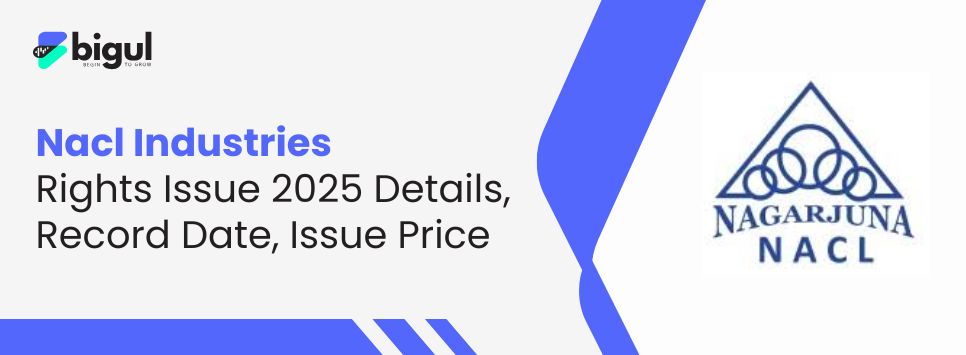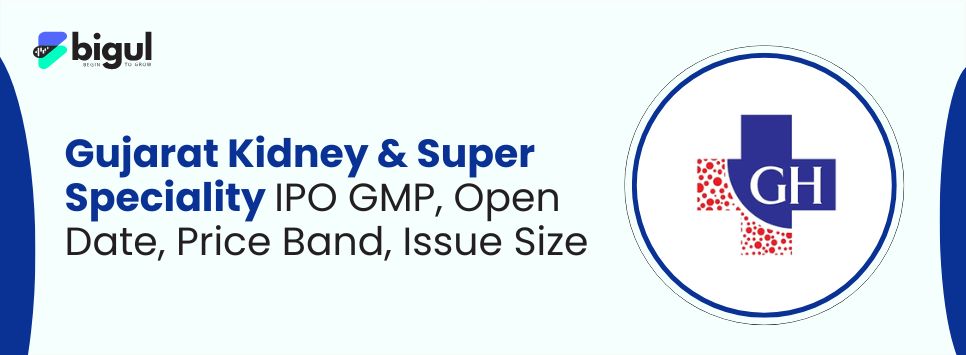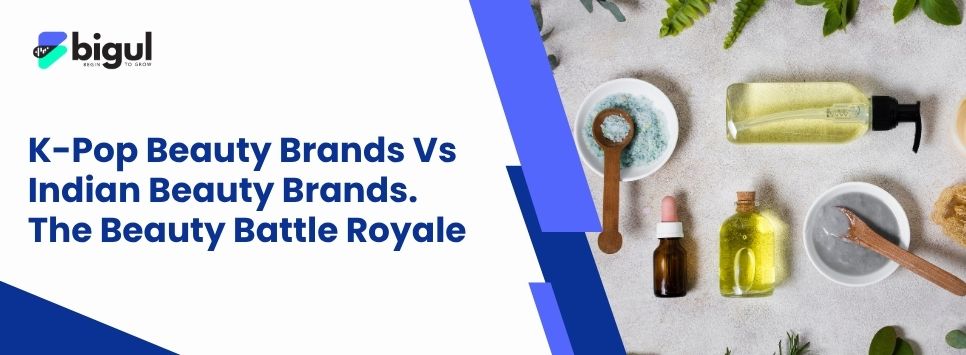The Indian beauty market is having its Netflix moment, and everyone wants the starring role. While homegrown heroes like Sugar Cosmetics have been building their empire one lipstick at a time, a new wave of Korean beauty brands is sliding into Indian vanity cases with the confidence of a K-drama lead making their grand entrance.
But here is the million-dollar question: Are these K-beauty brands just a fomo or will they crush the Indian beauty players?
Let's understand these step by step:
The Numbers Don't Lie: K-Beauty's Indian Love Story
Let's start with some hard facts that'll make your jaw drop faster than a plot twist in "Crash Landing on You." According to various research reports, the global K-beauty market is expected to experience a compound annual growth rate (CAGR) of 9.3%, reaching over USD 187.4 billion by 2030.
The interesting part of this is that Korean beauty brands have gone crazy, with only 2-3 brands a decade ago to more than 60 brands now, and India is one of the top 3 markets in the world to Korean beauty companies.
The Korean beauty invasion isn't just hype. India's K-beauty market jumped from USD 531 million in 2022 to a projected USD 1.3 billion by 2032, representing a robust 10% CAGR. Even more telling? Korean beauty brands now contribute 15% to Nykaa's overall skincare sales, while sheet masks dominated by Korean brands grew 27 times on Purplle. That's not growth – that's a straight-up takeover.
Also Read | HDFC Bank Announces First-Ever Bonus Share in 1:1 Ratio
Sugar's Sweet, but the Journey Is Challenging
Sugar Cosmetics is the poster child of Indian beauty entrepreneurship. The FY24 saw Sugar Cosmetics go beyond the Rs 500 crore revenue, but the growth tumbled to just 20% in FY24 against its 89% in FY23. The brand has a market share of 6.5% in Indian colour cosmetics, which also defines it as the third-largest Indian colour cosmetics brand.
But here's where the plot thickens: Sugar spent Rs 162 crore on advertising and sales promotion in FY24 – nearly 32% of its revenue. That's like spending Rs 32 out of every Rs 100 earned just to stay visible. And despite revenues crossing Rs 500 crores, Sugar still posted a net loss of Rs 67.6 crore in FY24, though it did manage to reduce losses by 11.4% from the previous year.
The Brand Play: David vs. Goliath vs. BTS
The brand positioning battle is where things get really juicy. Sugar built its empire on being the cool, affordable Indian brand that "gets" local skin tones and preferences. Sugar operates across 45,000 retail touchpoints and has 200 exclusive branded outlets, giving it a serious ground game advantage.
But K-beauty brands are playing a completely different sport. They're not just selling products; they're selling an entire lifestyle backed by the Korean Wave (Hallyu) phenomenon. Laneige is seeing 10-15% YOY growth in India, while Innisfree continues to clock 40-50% annual growth. These aren't just beauty brands – they're cultural ambassadors with BTS-level fan followings.
The Korean strategy is brilliant: they target Urban women who are in the age range of 18-30. These customer groups are skincare-conscious and digitally savvy, and very enthusiastic about the entire K-beauty philosophy of multi-step routines. Their innovative ingredients like snail mucin and fermented extracts, and the coveted "glass skin" look are taking place in the beauty shelf of Indians.
Digital Domination: Where the Real Battle is Fought
Here's where K-beauty brands are absolutely crushing it – and where Indian brands need to pay attention. India's online beauty sales surged 39% between June and November 2024, while physical store sales grew only 3%. Online beauty penetration reached 17% in India in 2024, up from 13% the previous year.
K-beauty brands have perfected the surgical use of the digital-first strategy. They are using media partnerships with influencers as well as unique online releases to generate FOMO that conventional advertising simply cannot compete with. The rate of Korean beauty imports has increased by more than 63% since 2021.
Meanwhile, traditional Indian brands are still figuring out the digital puzzle. Sugar spends heavily on digital marketing but still relies significantly on offline retail. The challenge? Youtube has over 491 million users in India versus Instagram's 392 million, and 95% of YouTube content is consumed in local languages, but most beauty brands still allocate 70-80% of content budgets to Instagram.
The Retail Reality Check
Let's get real about store presence. Sugar has expanded to 45,000 retail touchpoints, which sounds impressive until you realise that offline retail still accounts for 65% of beauty sales in India, with online at just 15%. K-beauty brands are strategically placed in premium retail outlets like Nykaa stores, Tira, and luxury department stores, targeting higher-value customers willing to pay premium prices.
The offline game is where established Indian brands still hold cards. Tangible experiences are part of the in-store experience, which is essential to the sale of color cosmetics and skin care, and to many Indian shoppers, particularly older and rural customers, offline stores are still relied upon. There are cultural shopping situations such as during particular events like Diwali Festivals and weddings which favor physical shopping.
But here's the kicker: K-beauty brands are rapidly expanding their offline presence. Laneige plans to move from a 9:1 online-offline ratio to 3:7 by focusing on high-value offline sales. Innisfree has 22 stores and is aggressively expanding.
Financial Firepower: The Ultimate Test
This is where the rubber meets the road. The Indian beauty market is worth USD 28 billion in 2024 and is estimated to achieve USD 48.3 billion by 2033 at a CAGR of 5.60 percent.But different segments are growing at wildly different rates.
Sugar's financials tell a story of scale challenges: despite Rs 505 crore revenue, the company spends Rs 1.16 to earn every Rs 1. Gross margins stand at 73%, which is healthy, but EBITDA margin is still negative at -9.22%.
This is in contrast with K-beauty juggernauts backed by huge Korean conglomerates such as Amorepacific. These companies possess decades worth of R&D spending, international supply chains and deep pockets when it comes to market expansion. The Cosmax, the largest cosmetics ODM in the world, has scored 1 trillion won in sales in the H1 2024 and is expected to hit 2 trillion won a year.
The Verdict: Disruption, Not Destruction
So, will K-beauty brands destroy Sugar and similar Indian players? The answer is more nuanced than a 16-step Korean skincare routine.
K-beauty brands won't destroy Indian brands, but they're definitely forcing a major evolution. Here's why:
1. Market Expansion Over Replacement: The pie of the Indian beauty market is growing at the rate of 10% annually, creating room for many players.
2. Segment Specialisation: The Korean brands continue to be dominant in luxury skincare and novelty, and Indian brands such as Sugar are powerful in lower-priced colour cosmetics and the mass market.
3. Distribution Advantages: The fact that Sugar has more than 45,000 retail touch points and strong local market insights gives it defensive moats, which K-beauty brands would take decades to match.
The future of the Indian beauty market will probably belong to a hybrid ecosystem in which Korean brands have a premium spot in skincare. Indian brands have the mass-market position with colour cosmetics, and global conglomerates duel in the mid-range.
K beauty brands cannot kill sugar and its comrades, but the latter will have to evolve quicker than a K-drama makeover montage to remain relevant in this new beauty paradigm. The actual beneficiaries?
The Indian consumer is now exposed to world-competitive products, formulations and pricing in all sectors. It just so happens that in this beauty battle royale, everyone can come out prettier than they were at the beginning of the fight.

.jpg)






.jpg)
.jpg)
